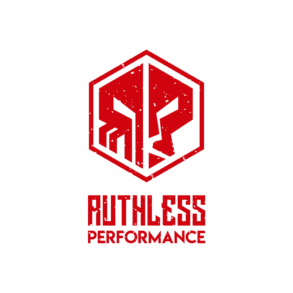The barbell is a fundamental building block across the domain of strength & conditioning. We utilize the barbell in almost every program. The barbell is primary in the sense that it is a ‘primary’ tool for developing the broadest and most encompassing skill portfolio, as far as skills related to athleticism and human performance are concerned.
It is because of this fact that barbell work tends to come earliest in the program, which makes it appear as though barbells abound in our training. BUT the barbell is not primary in the sense that it is not the most repetitious or common modality in the majority of the programs designed at Ruthless Performance.
This is a microblog so I’ll try to be as brief as I can. If you want more material on barbell training, Starting Strength, Mark Rippetoe’s company should be a primary resource.
But barbells are a powerful tool–plain and simple. Because of this power and because of the great volume of adaptations that a barbell can create at a neuromuscular level, its use is also extraordinarily taxing. So, as the volume of barbell lifts in a program goes up, the overall duration and volume that an athlete can handle in a given workout tends to decrease.
Then, if we’re trying to cover a few different goals in the same workout (to check a few boxes, so to speak) the barbell can be incredibly efficient. But the efficiency of the barbell diminishes in a variety of situations and an essential principle in strength and conditioning is understanding that balance.
My Quick Barbell Programming Guide
This is an approximate breakdown of what type of clients might get a certain range of barbell exercises. In most cases these clients would be with me 2-4 days per week, usually full-body workouts with the possibility of at-home / on your own (OYO) training.
Where I’ve optimized barbell work to be in the greatest variety of situations is 1-3 lifts in a given workout. We almost always program 7 primary exercises between warm-ups and cool-down. If the volume of barbell work gets into that 3-4 range the total number of exercises would usually be dropped down–i.e. a workout with 4 barbell lifts may only contain a total of 5 different exercises.
0-1 Barbell Lifts / Workout
- Clients with a history of mild to severe back injuries
- Brand new training clients
- Jr High or Hs Athletes
2-3 Barbell Lifts / Workout
After randomly sampling our most recently designed programs, the 0-1 and 2-3 group seem about even for barbell distribution in our program design. But some trainees here are:
- Recreational weightlifters / powerlifters
- Clients interested in physical transformation (i.e. rapid weight loss w/ muscle gain)
- More highly skilled trainees
- Stronger athletes
4+ Barbell Lifts / Workout
Even in a gym that enjoys and values barbell work (and full-body training sessions–at that), more than 3 barbell exercises in the same workout is rare. In digging through some of our programs, these are the few examples that I can find.
- Clients with very limited training time
- Athletes peaking for a weight lifting or powerlifting meet
Frequency of barbell lifts in a program is also determined by the demands of a particular exercise. Barbell curls are not barbell back squats and barbell shrugs certainly aren’t as demanding as olympic lifts.
So if not barbells, then what?
There’s lots of shit out there, some of it is good shit.
If you randomly sampled our training programs, you’d find more band-resisted exercises than barbell lifts (partially because the load isn’t constrained by gravity). In these programs are also suspension trainers (TRX), dumbbells, kettlebells, cardio equipment, slam balls, bodyweight, and so on. We’ll place whatever modality we think is best to help a client achieve their goals wherever we think we need to. And we have certainly built our reputation around comprehensive program design for a variety of goals.
In short, keep the barbell front and center but only insofar as its valuable to your goals as an athlete, or to your clients goals if you are a trainer.
The barbell is a tool, perhaps the most potent tool in the toolbox–just make sure that you’re thinking strategically about where and when to place it.
Just something to think about,
-John

